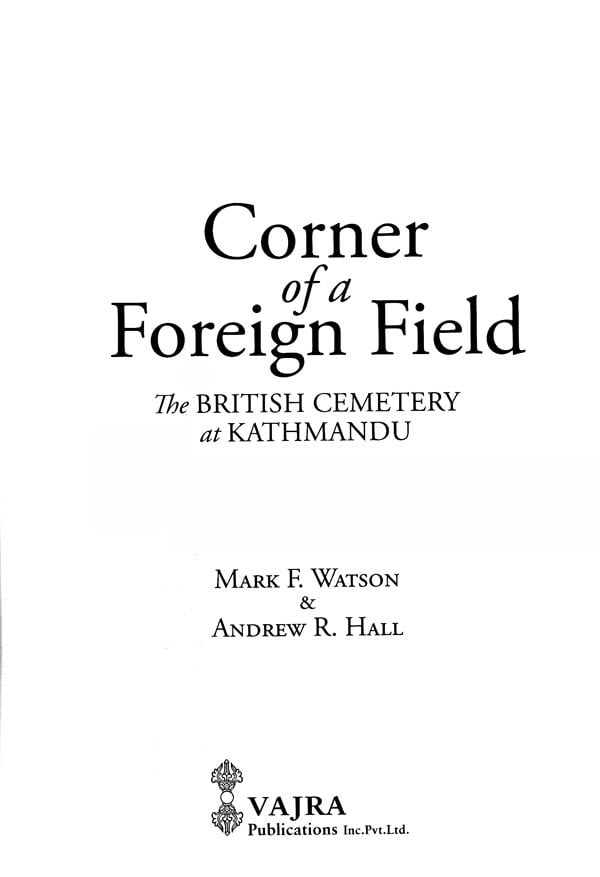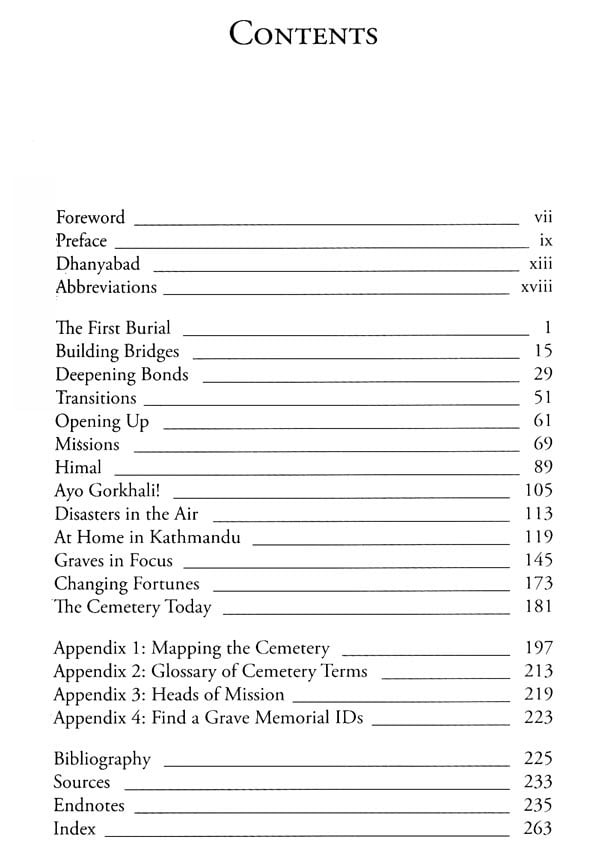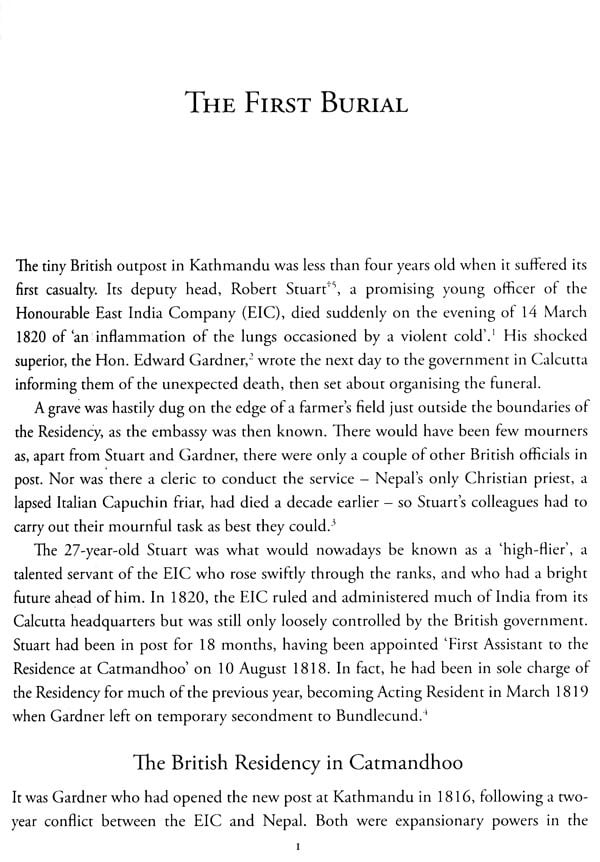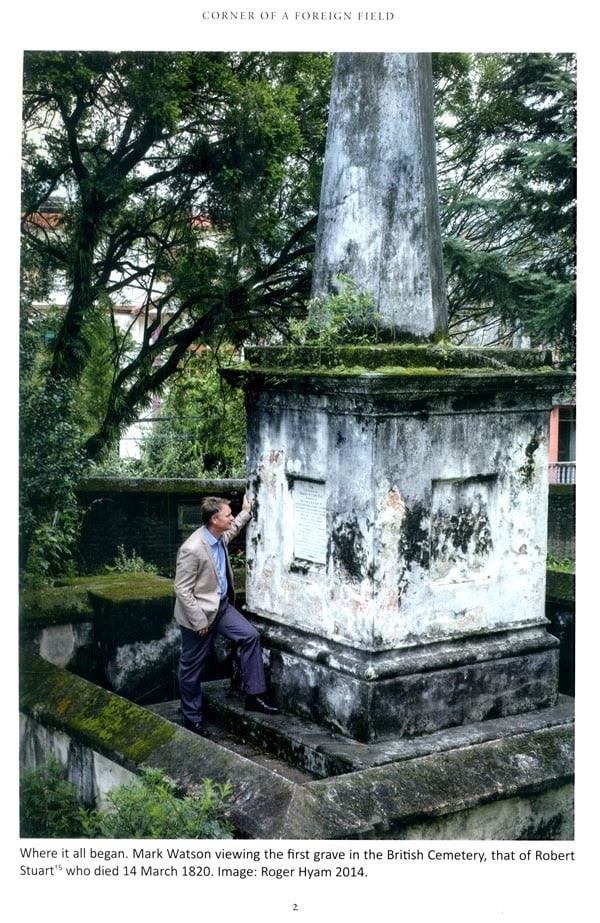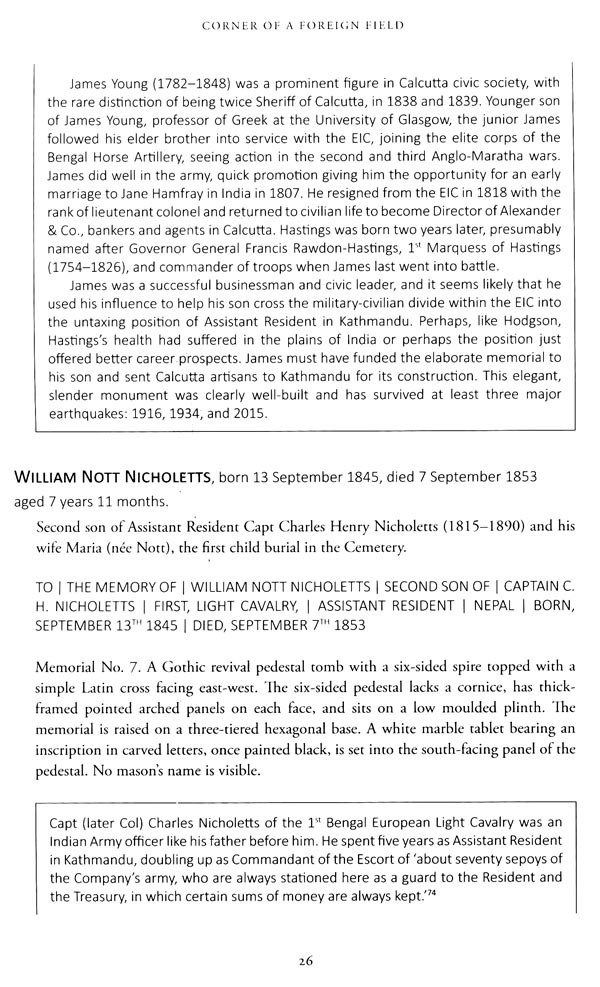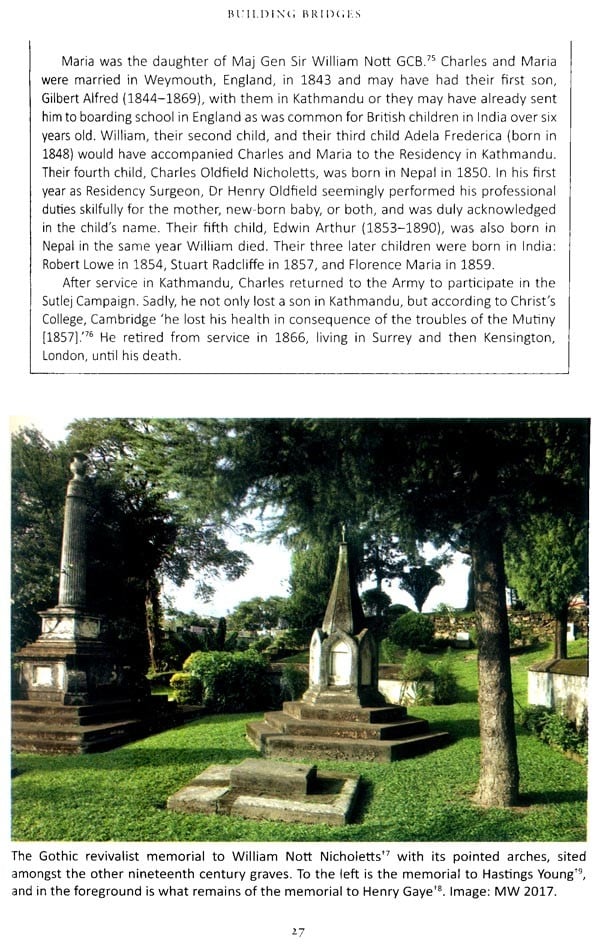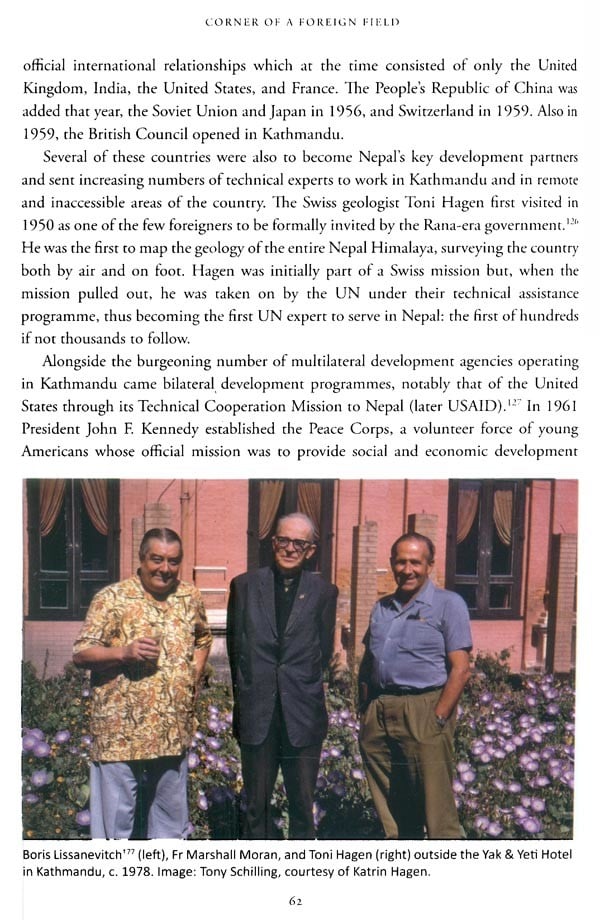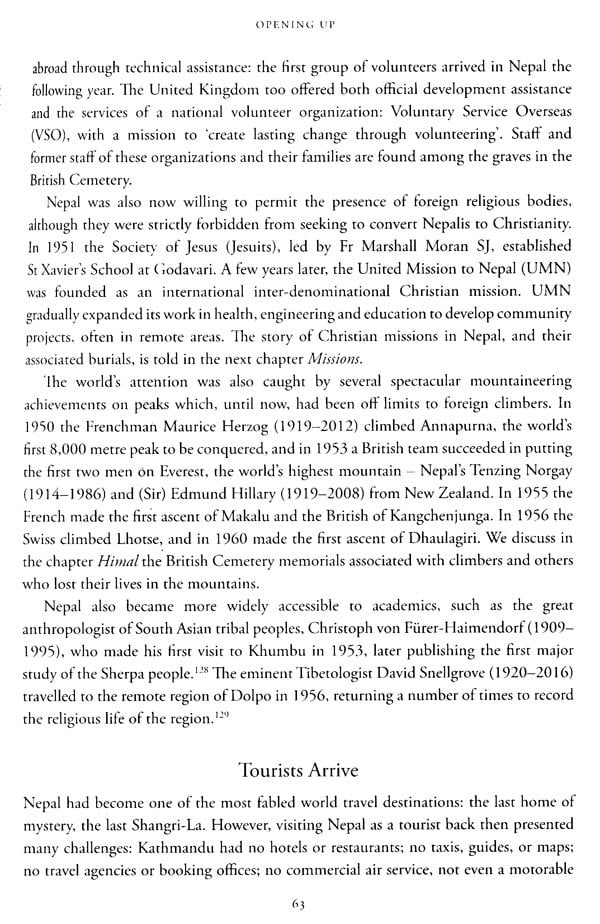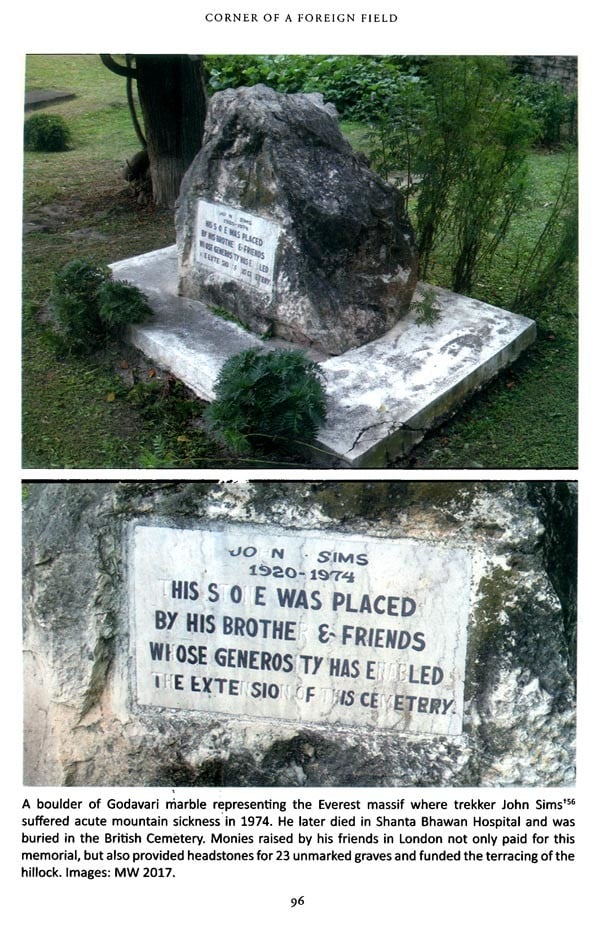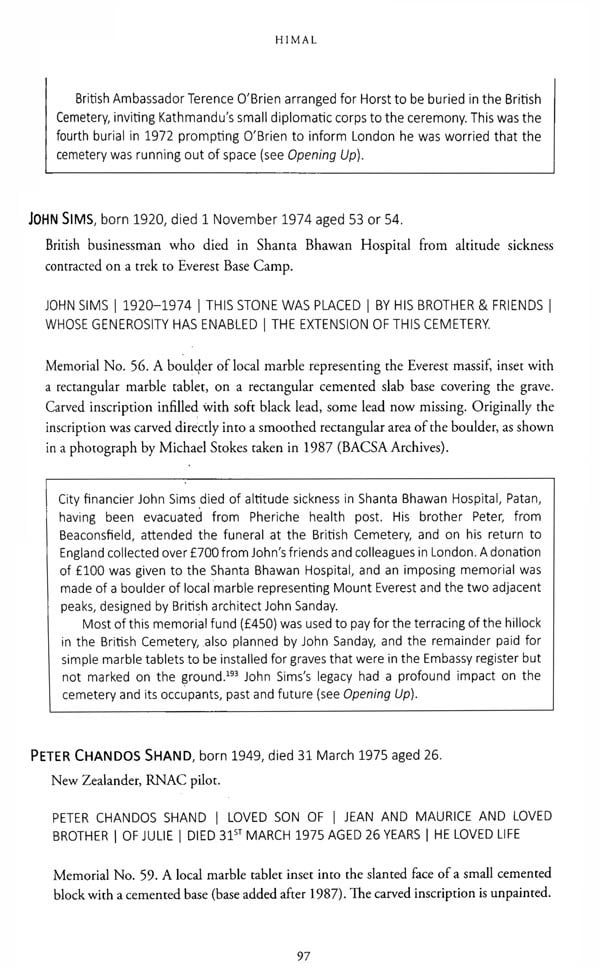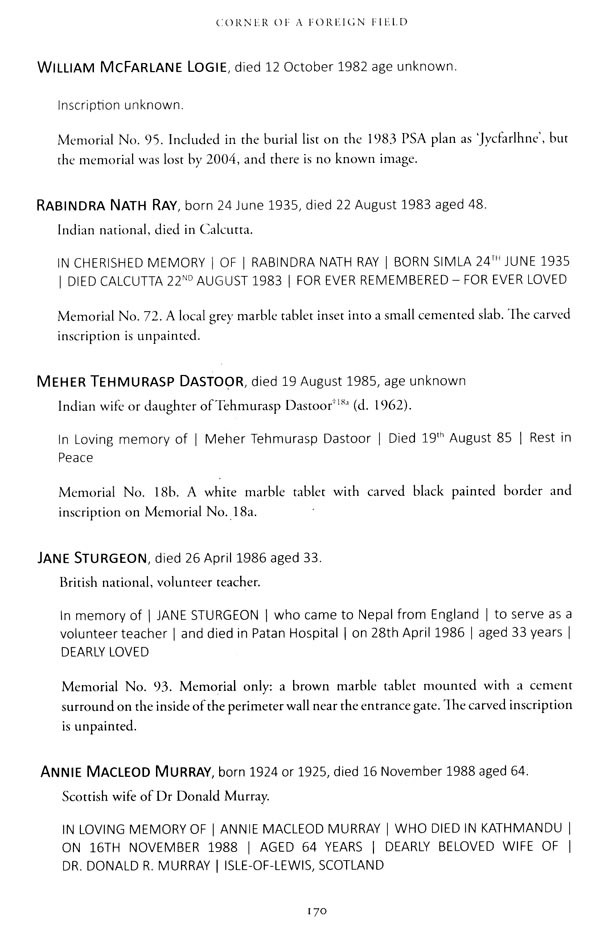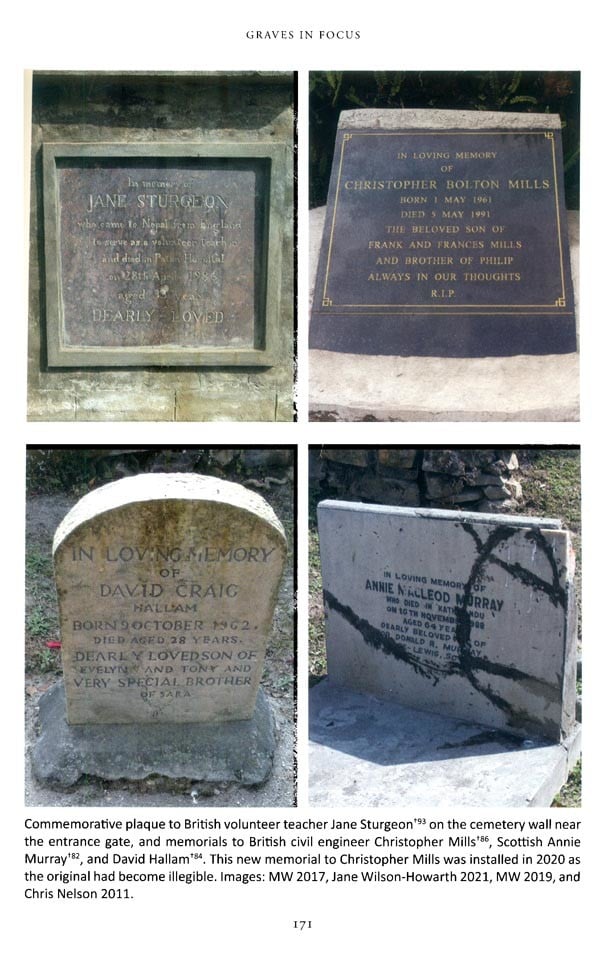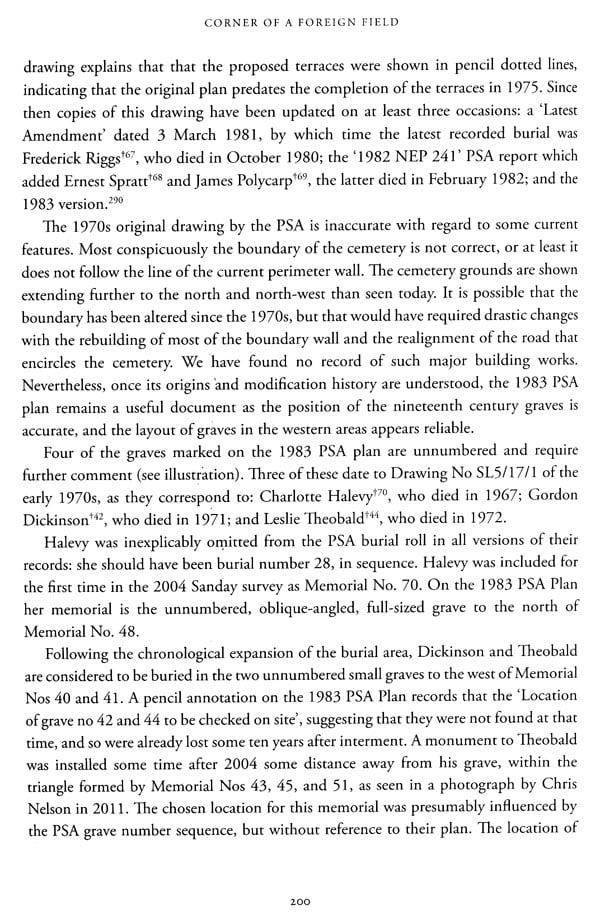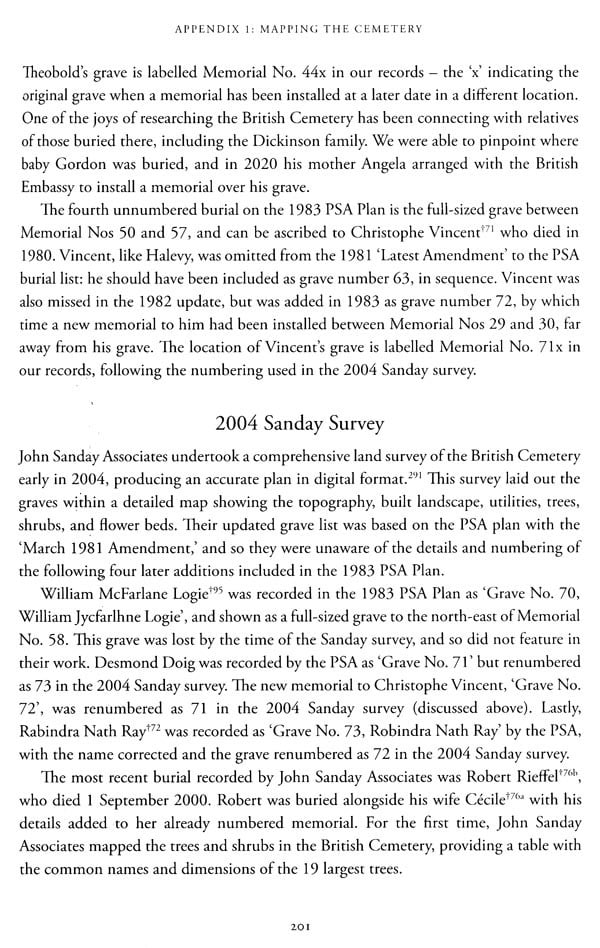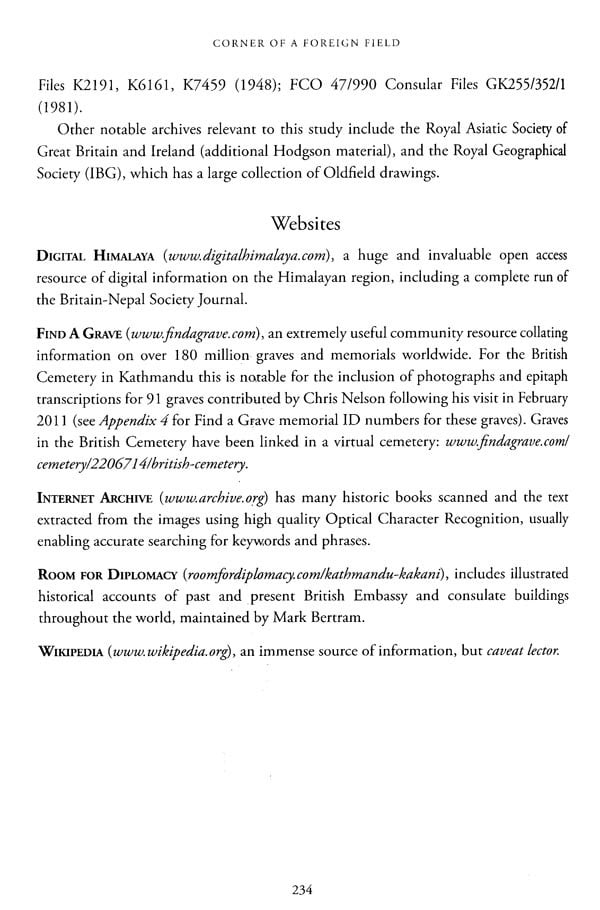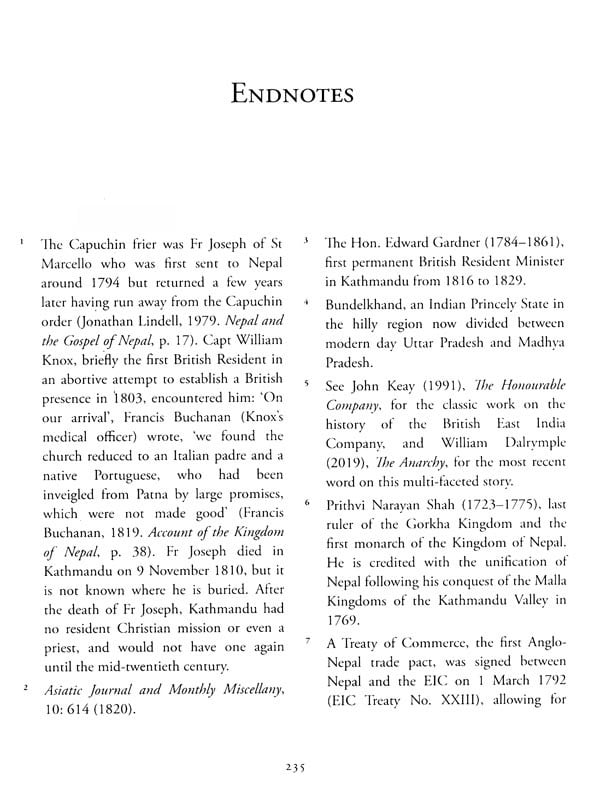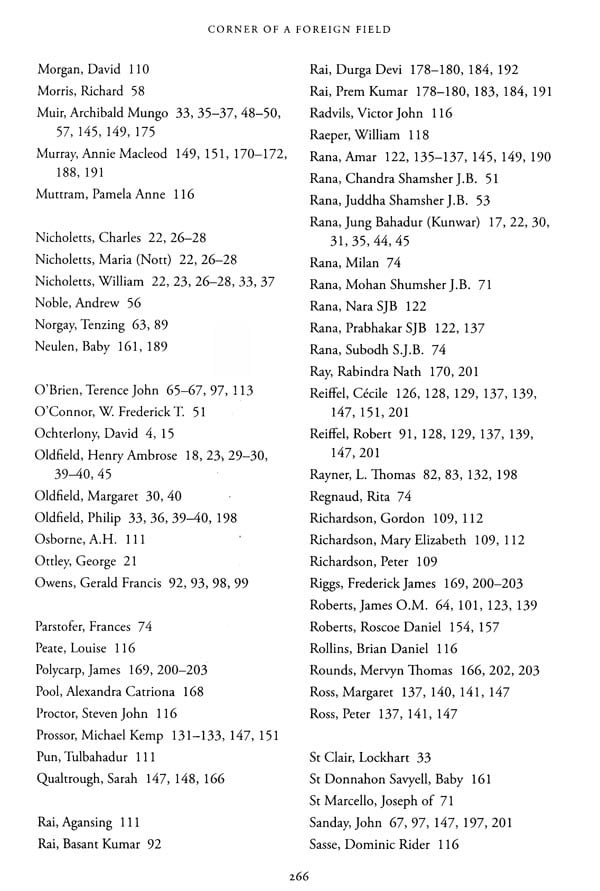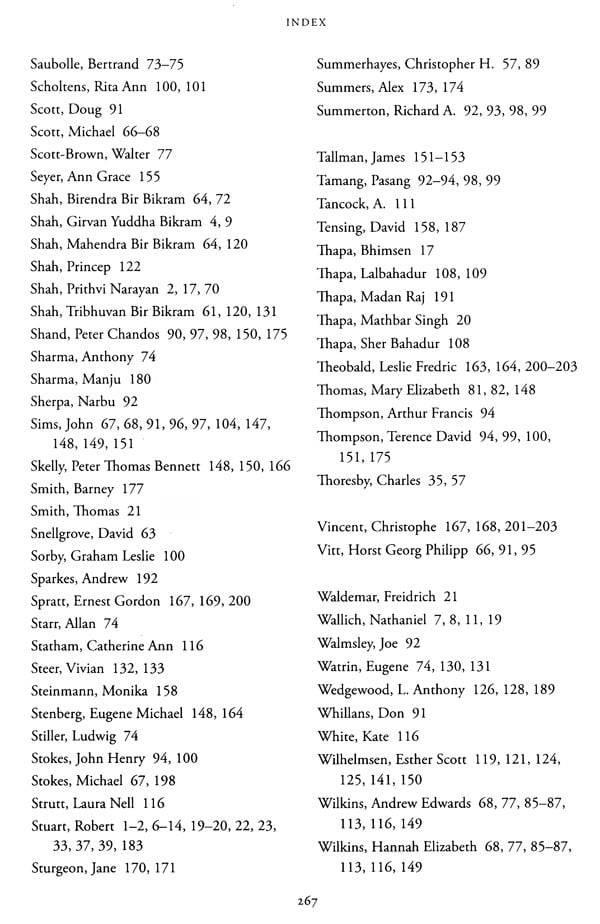
Corner of a Foreign Field- The British Cemetery at Kathmandu
Book Specification
| Item Code: | UAO558 |
| Author: | Mark F. Watson & Andrew R. Hall |
| Publisher: | Vajra Publications, Nepal |
| Language: | English |
| Edition: | 2022 |
| ISBN: | 9789937624145 |
| Pages: | 284 (Throughout Color Illustrations) |
| Cover: | PAPERBACK |
| Other Details | 9.50 X 7.00 inch |
| Weight | 790 gm |
Book Description
The cemetery and the graves it shelters have a story to tell about Britain's presence in Nepal. In the nineteenth century, when the Embassy was known as a Residency, the cemetery was the final resting place of those British staff and their families who died during their posting to Kathmandu. From the mid-twentieth century, as Nepal opened its doors to the outside world, expatriates came not just from Britain but from all over the world. Some established businesses which helped put Nepal on the tourism map. Others staffed hospitals and clinics. Still others were teachers or development experts Quite a few made Nepal their home and when they died the British Cemetery provided, for some, their final resting place; as it also did for occasional tragic victims of mountaineering accidents and air crashes.
It is 200 years since the first burial. There could be nobody better to tell the cemetery's story than Mark Watson and Andrew Hall. Dr Watson is Britain's foremost expert on the flora of Nepal, and the Head of Major Floras at the Royal Botanic Garden Edinburgh. He is the latest in the lineage of distinguished botanists going back to the first days of the British presence here. Dr Hall is a former anthropologist and retired diplomat who has known Nepal for over 50 years. In the 1990s he served as British Consul in Kathmandu and in the 2000s he returned as British Ambassador. As the current custodian of the British Cemetery I have been fascinated by this glimpse into our two countries' shared history. You surely will be too as you read on.
Kapurdhara Marg, north-west of the old centre of Kathmandu, is remarkable only for being extraordinarily narrow and hemmed in for its first few hundred metres by towering cement-rendered security walls. It is a tarmacked lane that threads its way between the Indian and British embassies, the British to the south and the Indian to the north. There is barely room for a single car to pass, and it would be a struggle to cut through the seemingly endless stream of motorbikes, cycles and pedestrians who use this shortcut between Lazimpat and Samakhushi.
Officially this is one-way, but locals seem to think that this only applies to cars, with predictable results. Some make their way to the vegetable market on the slope down to Kapurdhara, an area named after an ancient waterspout (dhana in Nepali, biti in Newari) with a huge, spreading camphor tree (kapur in Nepali; Cinnamomum camphora) which used to shade it, but is now long gone. The waterspout is just across the road opposite the south-west corner of the Indian Embassy compound; most people hurry past without even noticing.
Kapurdhara Marg is an ancient byway, dating back to at least 1816 when the British set up their diplomatic mission, the first by any country in Nepal, on land now given over to India. At its western end is a small, roughly triangular burial ground, once densely shaded by pine trees and rising to a prominent hillock on the eastern side.
**Contents and Sample Pages**
